Big Plans for Europe’s Particle Therapy Scene!
How CERN technologies are leading to possible Swiss and Baltic particle therapy centers.
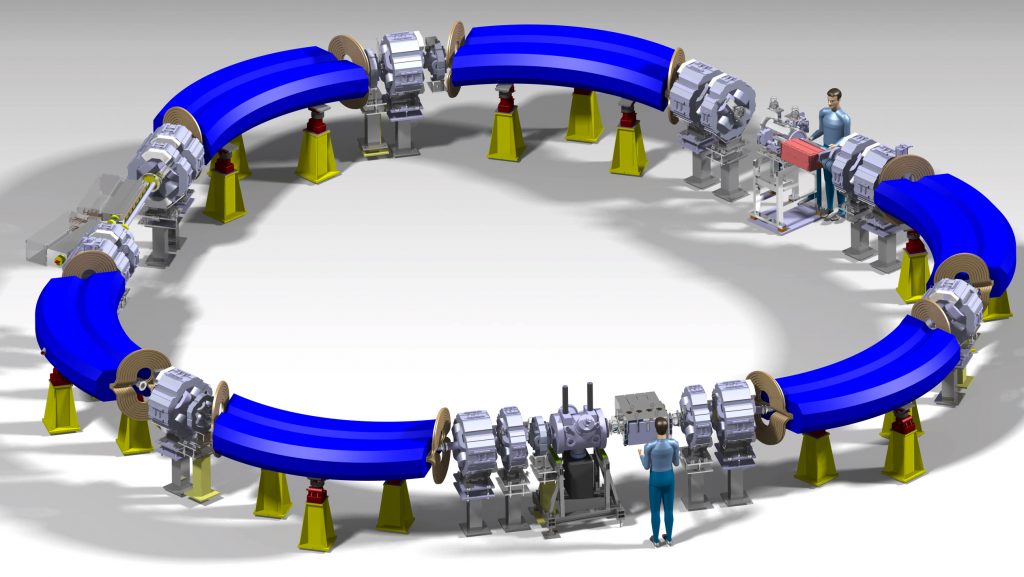
Reference: HeLICS Synchrotron – NIMMS Study
In the late 1990’s CERN launched the Proton-Ion Medical Machine Study (PIMMS), a collaboration between CERN, TERA, and Med-Austron, aimed at designing synchrotron accelerators for both light-ion and proton therapy. The program led to the construction of two centres: CNAO in Pavia, Italy, and Med-Austron in Wiener Neustadt, Austria.
Now 25 years later, the Next Ion Medical Machine Study (NIMMS), led by Maurizio Vretenar, aims to design and inspire the next generation of particle therapy facilities, which promise to be more compact and less expensive than their predecessors.
We talked to Ugo Amaldi, Scientific Director and Founding Member of Tera-Care, and Elena Benedetto, Technical Director at Tera-Care, on their proposal for a particle therapy centre based in Switzerland. Furthermore, we talk to Kristaps Palskis, Researcher at Riga Technical University and Erika Korobeinikova, Radiation Oncologist at the Lithuanian University of Life Sciences, on the proposal for a Baltic particle therapy centre.
What is the initiative you are attempting to push in your country?
Ugo Amaldi and Elena Benedetto (Tera-Care): By applying all the work done in the last years by NIMMS, with the Tera-Care Foundation, created in fall 2023 in Geneva, we aim to propose a Clinical Helium-beam Facility for Switzerland (CHeFS), that can be split into 2-3 distinct stages:
• CHeF-one: The first stage is a helium-ion high-intensity linac for the production of astatine-211 (At-211) and other novel theragnostic radioisotopes that can cure metastatic cancers. Linked to new powerful radiopharmaceuticals, and thanks to the long half-life of At-211 (7.2 hours), CHeFS could serve Switzerland and eventually a broader area in central/southern Europe.
• CHeF-two: In the facility’s second stage, we aim to add a synchrotron to accelerate the helium ions from the linac to the energies needed for cancer treatment and possible research. For this second stage, only one single room is foreseen.
• CHeF-plus: A third (optional) phase might include an extension to the full complex facility with several beam lines, a gantry, and a dedicated experimental room. This is schematically shown in the figure, which is taken from NIMMS papers.
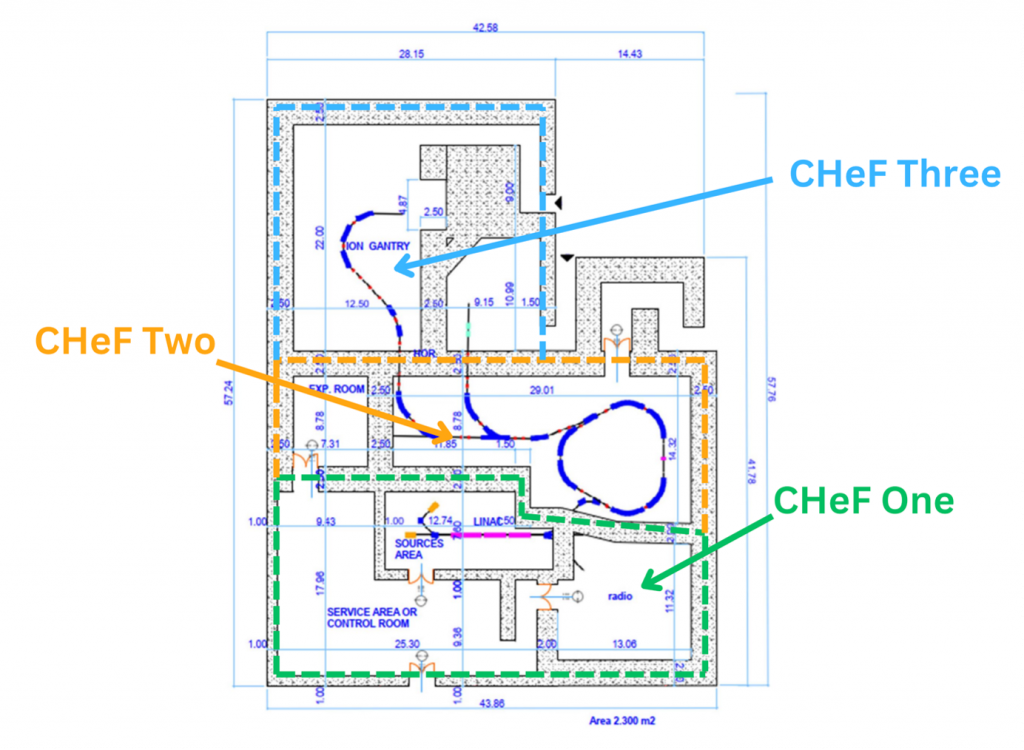
CHeFS, the Swiss facility staged-project, based on the NIMMS conceptual design.
Kristaps Palskis and Erika Korobeinikova (Baltic): On our side, since 2021, the CERN Baltic Group (CBG), comprised of 14 scientific universities and research institutions in the region, are working on “Advanced Particle Therapy Centre for the Baltic States” initiative, in close collaboration with NIMMS. The initiative works towards a proposal for the construction of a large-scale scientific research infrastructure and particle therapy center for the 3 Baltic countries – Lithuania, Latvia, and Estonia, and is motivated by 4 main drivers:
1. Have a common scientific research centre, with a broad research programme in domains of clinical, natural and technical sciences.
2. Have a common particle therapy centre for cancer patients in the 3 countries.
3. Have a long-term participation towards the development of novel cancer therapies on a global scale (for example the development of Helium Ion Therapy).
4. Grow the competencies and knowledge of local industries in the technical domains necessary for particle accelerator infrastructure, as well as creating innovation hubs in healthcare technology development.
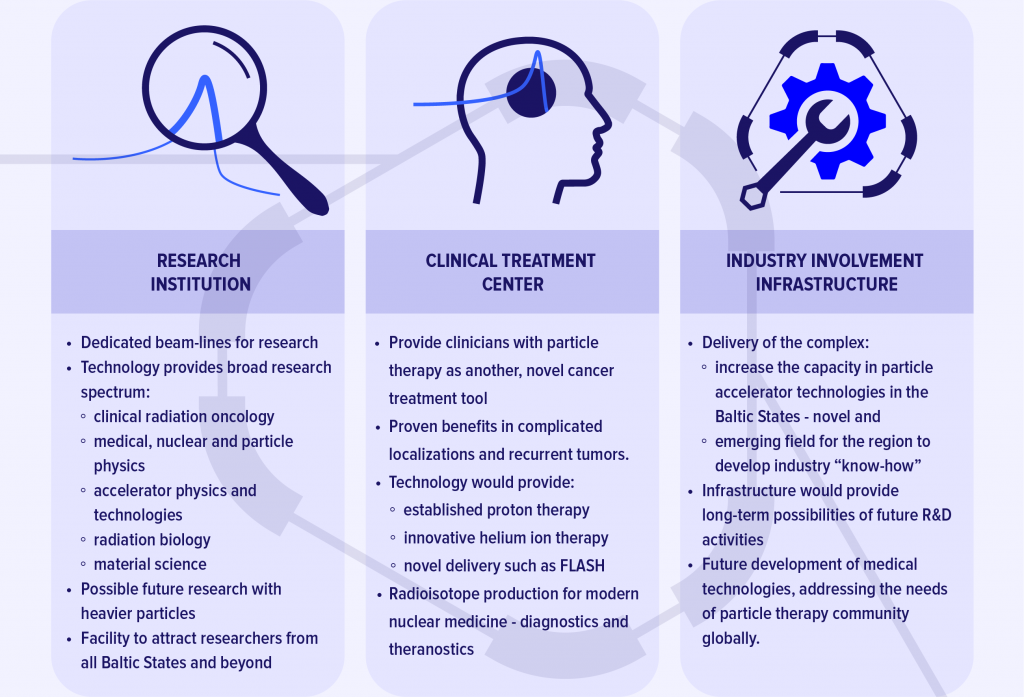
Baltic Centre main pillars
What are the unique characteristics of your proposed facility?
Ugo Amaldi and Elena Benedetto (Tera-Care): Concerning the use of the NIMMS linac (helium): At-211 is one of the most promising isotopes for Targeted Alpha Therapy of tumour and micro-metastases. The reaction to produce it with a beam of helium ions, which are currently not being used in the commercial space, is favourable in terms of cross-section and purity. The acceleration of a very intense He beam at a well-defined energy is something that a linac can do much better than the cyclotrons currently used to produce radio-isotopes for medical applications.
Concerning the synchrotron, helium-irradiation is twice more precise than protons and can benefit in particular paediatric patients. In Switzerland, we estimate that about 300 patients per year, in particular 50 children, per year, will benefit from treatment with helium.
Kristaps Palskis and Erika Korobeinikova (Baltic): At the “heart of the centre” we envision the construction of a synchrotron designed specifically to accelerate both protons and helium ions. The synchrotron will be based on the unique NIMMS Helium Synchrotron: HeLICS design. In the short term, this would allow the introduction of proton therapy in the region, while in the long-term, follow up from the research of helium therapy at Heidelberg Ion Beam Therapy Centre, Germany. Furthermore, our plan is to also construct a parallel radioisotope production line. Our focus would be on unique production pathways with alpha beams for exotic isotopes. One of the most attractive possibilities is alpha emitter isotopes, such as At-211. This production would complement the helium therapy section of the centre, allowing us to treat both solid tumours with helium therapy and some micro metastases with radioisotopes in novel nuclear medicine approaches, along with much more.
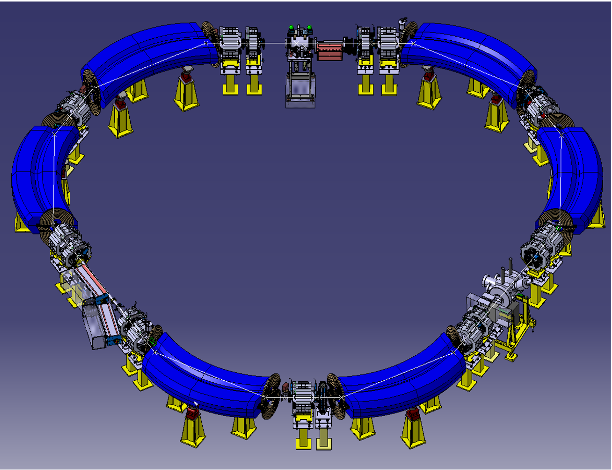
Reference: HeLICS Synchrotron – NIMMS Study
For research, we propose that the facility has broad capabilities for clinical research, physics and material science, radiobiology research, accelerator technology development, and many more!
Why do you think your region needs such a facility?
Kristaps Palskis and Erika Korobeinikova (Baltic): One of the driving arguments is that the Baltics currently do not have such a large research infrastructure with a broad, multi-disciplinary scientific programme. In a way, this slightly alienates us from the scientific community in Western Europe for several research fields. We would like to move forward being able to contribute to scientific output on a larger scale, especially, global research in particle and radioisotope therapies. A Baltic centre would also help develop further our scientific competencies in partnership with a world leader – CERN – and build fruitful collaborations for the future.
Furthermore, clinically, around 12,000 patients a year are treated with radiation therapy in the three Baltic countries. Up to 10–15 percent of them could benefit from particle therapy — an advanced treatment that is currently unavailable to the people of the Baltic region. In addition, expanding the scale of clinical trials in the Baltics, that could come out of this facility, will help the region increase competencies and presence.
A lot of these points can be seen in our recent publication: https://link.springer.com/article/10.1007/s12553-024-00875-2
Ugo Amaldi and Elena Benedetto (Tera-Care): Switzerland is a central and key European country. Thanks to the relatively long lifetime of At-211 (7.2 hours) we hope to serve a wide area of hospitals and clinics both within Switzerland, and wider Europe, in particular for the cure of metastatic Castration Resistant Prostate Cancers (mCRPC). We think that the presence of big pharma companies and a consortium of public, private and research partners (among which of course; CERN), can eventually provide all the ingredients to make the facility happen quite rapidly. In all Switzerland has scientific excellence, a solid industrial market and a strong MedTech and investment environment.
How will the knowledge generated through CERN NIMMS apply to a potential facility?
Kristaps Palskis and Erika Korobeinikova (Baltic): The technical basis of our initiative will be directly inspired by the work of NIMMS. We hope to use the NIMMS toolbox, such as HeLICS, gantries, LINACs and more, in our facility. The initiative would also follow the successful footsteps of the PIMMS initiative, which resulted in the construction of CNAO and MedAustron.
Ugo Amaldi and Elena Benedetto (Tera-Care): The project relies on (and was inspired by!) the knowledge generated within the CERN NIMMS initiative, to which Tera-Care is actively contributing especially in the design of the Helium synchrotron. Furthermore, the NIMMS LINAC design is based on LINAC 4, here at CERN, which works perfectly.
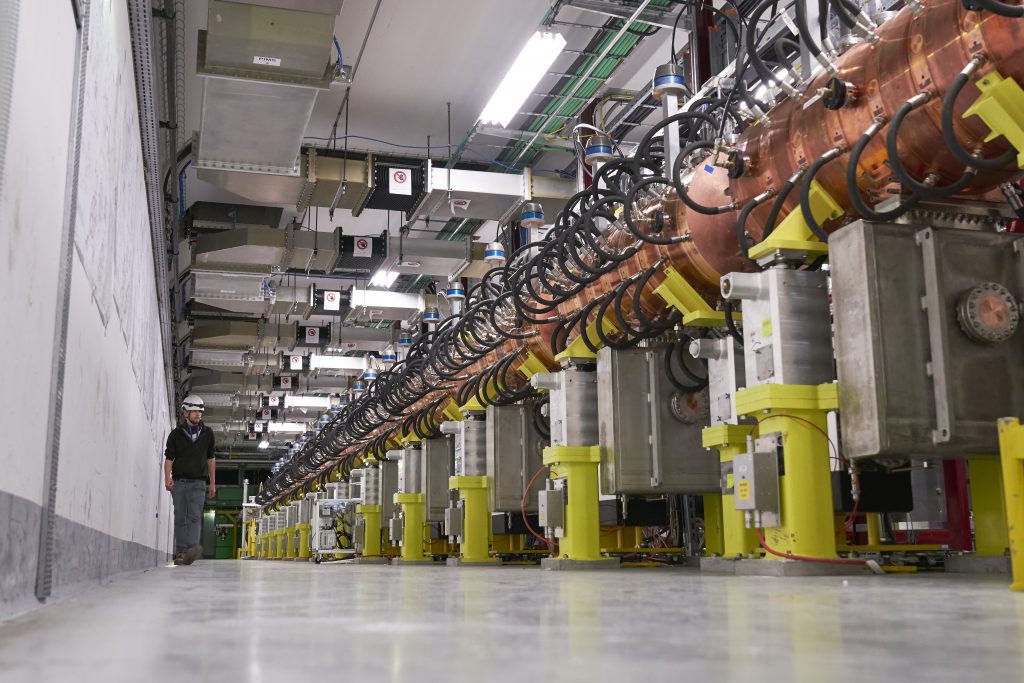
LINAC 4, CERN
What do you see as the make-or-break points in making this centre a reality?
Ugo Amaldi and Elena Benedetto (Tera-Care): Well, from the scientific point of view, this is the perfect time to make it happen. We need to profit from the momentum and synergies of the several initiatives that are happening in parallel across Europe and elsewhere, both in the field of hadron therapy and in theragnostic (and personalised medicine in general). Several of our high-level network and potential partners in Switzerland showed enthusiasm and support. We aim to provide a technical design and business plan by the end of 2027 and form a consortium that will include some of the investors for the construction phase. Therefore, the support we get from the community will be the decider for us!
Kristaps Palskis and Erika Korobeinikova (Baltic): Firstly, we need clear support from the medical community in the Baltics. So far, we have gathered initial interest and support, however, this needs to be continued and expanded even more.
Secondly, we need to get the health ministries on board, in order that our treatments are reimbursable. Healthcare is public in the Baltics, and therefore, their greenlight is essential. Thirdly, we need an agreement between the 3 Baltic countries for the construction of the facility and continuous operation, supported by all 3 states. This being said, again things are looking promising, and we continue the engagement of these stakeholders on the right track.
Lastly, we need to perform an economic analysis and fully assess the demands of our healthcare systems, demonstrating, clear cost benefits and economic return of the facility. On all these aspects we are actively currently working on and will continue as our next steps.
What R&D / feasibility still needs to be developed to make this centre a reality?
Kristaps Palskis and Erika Korobeinikova (Baltic): Our next steps are to engage further with different stakeholders in the Baltics, including a wider part of the medical community, and policymakers. As we said before, we have an initial big interest, however, due to the size of the project and ambition, we still need more factual reasoning to go further. This leads to our current focus – the preparatory stage of a Feasibility Study. We aim to complete this preparatory stage in mid-2025. During this stage, we have been preparing, essentially, a project proposal for the assessment of all the relevant questions of our initiative in clinical, technical, scientific research and economic output domains. Following this we aim to launch our full Feasibility Study for the next two years. In the meantime, we will continue to collaborate with the NIMMS program on the development of the technology and collaborate with other institutes around Europe.
Ugo Amaldi and Elena Benedetto (Tera-Care): Our approach is to have the Consortium build a facility based on the available technology, in order to have a high-TRL product that can be easily built and industrialised. In parallel we will participate in collaborative R&D efforts to improve, for other advanced centres, the linac, and the synchrotron, with even higher intensity ion sources, HTS (high-temperature superconducting) magnets and other solutions for energy efficiency, to name a few. For what is “downstream” of the accelerator(s), we are already in touch with a radio-pharmaceutical centre, because the radio-chemistry is complex, as well as with a medical centre to explore possible partnerships. Our collaboration with NIMMS and other particle therapy centres, such as the groups working towards the Baltic Therapy Centre, will most definitely continue for the years to come.
“The realization, with the support of CERN, of these two projects will be a further demonstration of the validity of the motto: “Physics is beautiful and useful” – Ugo Amaldi